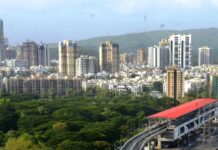Bengaluru, December 10, 2015: A region being close to coast, riverbeds or under the radar of regular or irregular monsoons is sure to receive Poseidon’s wrath anytime. This brings our attention towards the importance of having a strong drainage management system along with sturdy structures in the regions so as to avoid any form of damage or bringing the region to a standstill. The recent Chennai floods have come out as an eye-opener for several realty regions such as NCR, MMR, etc. as they sit along several rivers and face irregular and untimely rains throughout the year. As the global warming is catching pace on the planet Earth, nature’s forces must be taken seriously for a better future of all. Thus, we now look into how well Indian realty is prepared from the developers’ perspective or infrastructure facilities currently available in the regions.
“History has been a witness to how regions have been completely whitewashed due to floods arising out of nonstop rains and proves infrastructure’s weakness to cope up with nature’s forces. In such cases, a strong regional drainage management disposal system along with structural strength of properties gets tested to the core. In India, these are still weak spots with private companies trying to offer solution based housing projects to tackle such problems”, explains Mr. Rupesh Gupta, Director, JM Housing.
Researches prove that higher amount of floods dampens the ground which gradually weaken the tectonic plates below. This in turn damages it thereby drastically increasing the chances of earthquakes in future. Hence, having strong structures allows to neutralise this effect to a certain extent. “For instance, as Delhi/NCR sits on seismic zone IV along with the presence of Ganga, Yamuna and Hindon rivers, chances of floods and quakes are almost doubled. Thus, we make sure that projects stand ready equipped with structural soundness to stand against strong quakes and features like rainwater harvesting, water storage and drainage systems to avoid water accumulation of any sort”, shares Mr. VikasBhasin, MD, Saya Group.
To answer how developers are imbibing features and facilities to allow residents to live peacefully during situations of catastrophe, Mr. Sushant Muttreja, CMD, Cosmic Group avers “Whenever a project is planned, proper monitoring of habitat and environment is done so as to understand the extent of damage it may put on the structures in event of worst case scenario. Thus, all of our projects are planned keeping in mind stability of the structure and added facilities with sufficient trained manpower that allows such disasters to be managed with utmost care”.
Speaking about the lack of supportive infrastructure in the regions, Mr. MukeshKhurana, MD, RudraBuildwell says “The reason why rains get converted into floods is because of the problems persisting with the sewerage and drainage management systems. Also, disaster management teams in our country aren’t efficient enough as we see that final solution is provided by Army personnel. In such cases, local civic authorities need to make sure that infrastructural facilities never come out as the loopholes for the region, as it is the residents who end up suffering. We as developers can also offer facilities in the projects to a certain extent, to avoid level 1 problem but post that, things have to be looked into by the authorities only”. Adding to his fact, Mr. Rakesh Yadav, Chairman, AntrikshIndia states “Modern day realty development is working closely on safety and security needs of its residents. From water harvesting and drainage system to bunker sites, RCC framed structures for earthquake resistance to professional in-house disaster management teams, and so much more. Developers are charging nothing extra to offer such facilities as these are the basic rights of every resident of a project. Thus, it’s a joint effort that private and public bodies must undertake to secure the residents of any given region”.
“Recent floods at Kashmir, Chennai and Mumbai, damages resulting from earthquakes in the North East and parts of NCR are a reflection of our continuous failure to provide sound infrastructure to the country. It is very important to take lessons from these events and come out with precautionary measures for the residents so as to negate this damage effect. Thus, work at both, public and private level needs to be taken up very seriously where the private players are already doing a lot by providing several disaster management facilities whereas, public sector still requires a major revamp especially for Tier 1 regions”, concludes Mr. KushagrAnsal, Director, Ansal Housing.



















